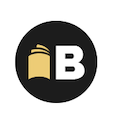- Home
- Canadian Bookkeeping Compliance Resource
- Payroll Tax Rates
- Hiring Credit

Focus On Payroll Bookkeeping
CRA Hiring Credit For Small Business in Canada

by L. Kenway BComm CPB Retired
This is the year you get all your ducks in a row!
Published May 2014 | Edited July 18, 2024
Tracing History - This Page is Archived and Will Not be Updated
WHAT'S IN THIS ARTICLE
What years is the credit available? | How does the HCSB work? | Can I book an estimate? | How do I record the credit in QuickBooks®? | How will the credit affect my T4 summary?
Let's chat about how to account for a CRA hiring credit for small business (HCSB). I've taken this opportunity to consolidate any questions in the forum and work them into the chat.
Warm up your tea cup, get your HCSB letter/notification from CRA and open up QuickBooks before we get started.
What Years Does The Hiring Credit Apply To?
The hiring credit is available for the years 2011, 2012 and 2013. It was NOT extended for the year 2014.
A job credit for small business was introduced in September 2014 as a two year measure to lower EI premiums. It will be in effect for 2015 and 2016. The Small Business Job Credit reduces the EI rate from 1.88% to 1.60%. You do not need to apply as CRA will automatically establish eligibility based on your T4 returns filed. It will apply the refund to your account balance then pay out the remaining balance if there is no outstanding balance on your account.
More >> Small Business Job Credit - 2015 & 2016
What are the Qualifications?
You qualify for this temporary credit if:
- your 2012 and 2013 EI premiums were $15,000 ($10,000 in 2010 or 2011) or less;
- you experienced an increase in premiums in the prior year;
- you deducted EI premiums paid to your employees or your workers and reported/filed this on a T4 slip.
How Does The Hiring Credit Work?
If you are eligible for the hiring credit , CRA will automatically calculate the amount for you from your T4 slips and summary filed. The maximum amount of the credit is $1000.
CRA will send you a letter notifying you about the credit and how it has been applied to your payroll account. Your Statement of Account is the best place to see how the credit was handled.
If you have outstanding payroll amounts due, the credit will be applied against that. If not, CRA will apply the credit to your current payroll year.
You now have two options:
- You can reduce your next payroll remittance by the amount of the credit; OR
- You can request a refund by direct deposit or cheque ... as of January 2013 you can make the request online using My Business Account.
See below on how to record either option in QuickBooks.
Can I Apply An Estimated Amount To My Current Remittance?
The CRA website states:
"What you cannot do while waiting to receive a credit .... Even if you are eligible for the HCSB, you cannot reduce your payroll remittances by the amount of the credit that you think you will receive until we advise you to."
How Do You Record The Hiring Credit in QuickBooks®?
Option One - reduce your next payroll remittance by the amount of the credit
- Once CRA has notified of the credit amount, make a note on your calendar or "to do" list to reduce your next payroll remittance. Best practice, do NOT enter it as a liability adjustment.
- When your next payroll remittance is due, open your pay liabilities window.
- As usual, select your liabilities to pay.
- To claim your payroll credit, click on "create" to review your liability cheque.
- Once you are in the cheque window, click on QuickBooks' expense tab.
- Enter the account you use to track your EI Employer expenses. The QuickBooks default account is Payroll Expense. If that account doesn't come up, you will have to determine how you setup your file to capture the employer's portion of EI.
- In the amount column, enter the amount of your credit as a negative.
- In the memo field write "Apply yyyy hiring credit" where yyyy=the appropriate year of the credit. Check your CRA documents if you aren't sure.
- Click on the recalculate button. This reduces the amount of the payroll liability cheque you are remitting to CRA by the amount of your HCSB.
- Click save and close.
- Followup by checking your next Statement of Account to make sure everything posted properly on the CRA side of things. Reconcile this to your payroll accounts.
- If for some reason your credit is larger than the amount of your payroll remittance, take the maximum amount for the period ... this will create a nil cheque. Remember to still send in / eFile your PD7A ... just don't remit the calculated amount due as your hiring credit offset it. Use any remaining amount on your next remittance.
Option Two - request a refund by direct deposit or cheque.
- Contact CRA and request the refund.
- When you receive the refund, it is considered business income.
- Go to bank deposits and code the amount received to Other Income. (If you want, you could setup a receivable based on your notification letter from CRA then apply the refund using customer payments instead of make bank deposit.)
Reference Source: Intuit Support Article ID: INF18529
How Does The HCSB Affect Your T4 Summary?
At year-end, box 82 on your T4 summary will not match box 80. The difference should be equal to the HCSB amount.
As the HCSB amount is part of your Statement of Account, your payroll account should show a nil balance owing. CRA will know that the difference on your T4 Summary is due to the hiring credit.
I don't know why CRA doesn't revise the T4 Summary form to include a line for the HCSB. My guess is it was because the HCSB was initially introduced in 2011 as a one time temporary credit that keeps getting extended.

See you on the next page ...
Your tutor
Member of the QuickBooks ProAdvisor® Program. QuickBooks and QuickBooks ProAdvisor are registered trademarks and/or registered service marks of Intuit Inc.
Bookkeeping Essentials > CRA Hiring Credit For Small Business
Home > Canadian Payroll Tax Deductions > HCSB Bookkeeping